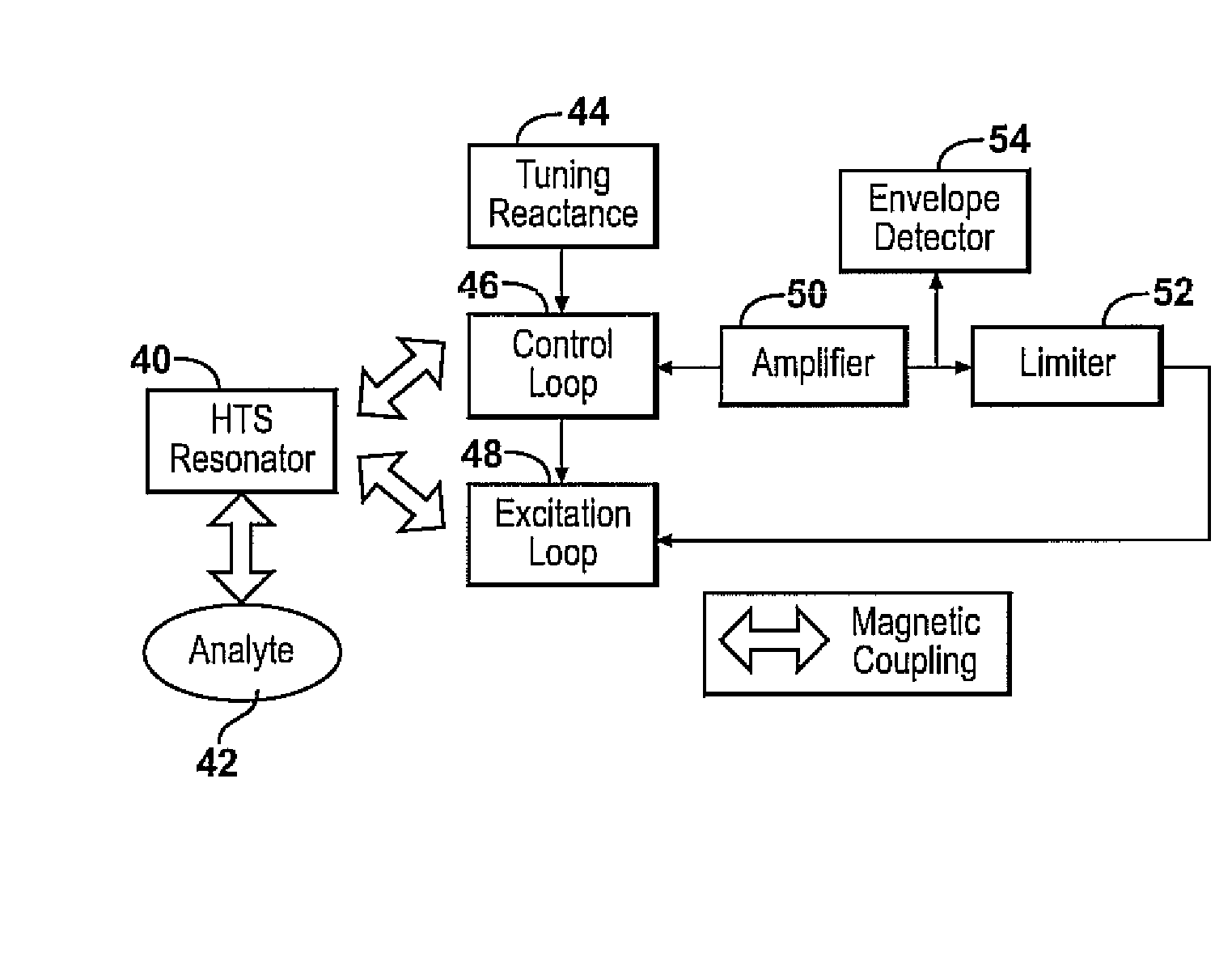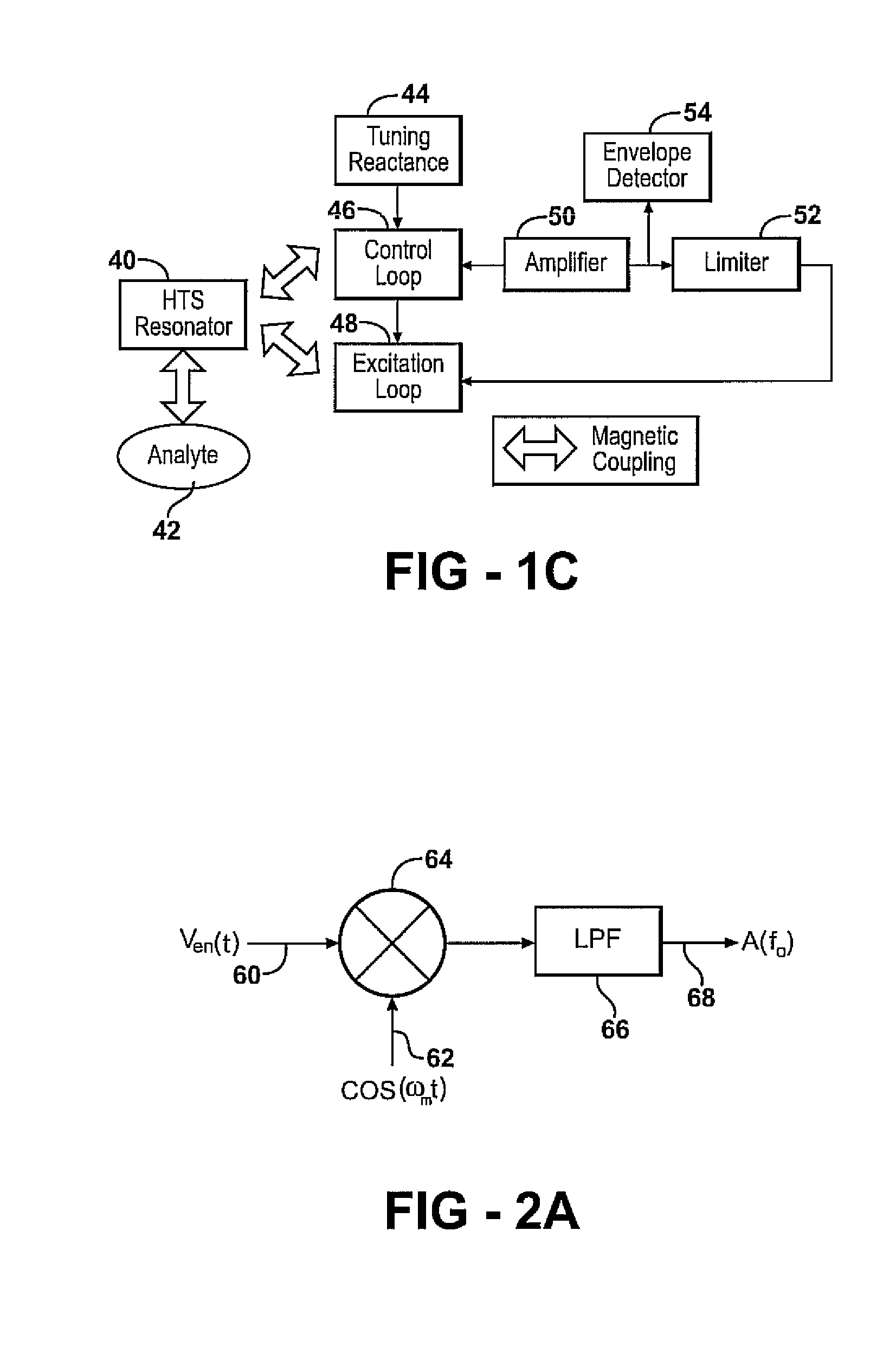Continuous wave nuclear quadrupole resonance spectrometer
a quadrupole resonance spectrometer and continuous wave technology, applied in the field ofsignal detection, can solve the problem of impractically large detection time for security or other applications, and achieve the effect of less estimation error and easy understanding and implementation
- Summary
- Abstract
- Description
- Claims
- Application Information
AI Technical Summary
Benefits of technology
Problems solved by technology
Method used
Image
Examples
Embodiment Construction
[0039]Embodiments of the present invention include apparatus and algorithms which allow reduction of the time required to detect and characterize quadrupole resonance (QR) transitions using continuous-wave (CW) spectroscopy. The time required to search for, verify the presence of, and quantify the properties of a QR transition can be reduced, compared to existing techniques, by providing an approach for systematically varying the amplitude and frequency of the CW excitation signal over orders of magnitude while simultaneously reducing the number search steps in which the frequency and amplitude of the detection system are varied.
[0040]Novel search algorithms were developed to improve the detection time of CW QR spectroscopy. The expected time to detection for a blind search can be improved by using a nonlinear search, such as a spiral search. A data-dependent search can be used to characterize the transition frequency and full-width at half-maximum using less search points than a bl...
PUM
 Login to View More
Login to View More Abstract
Description
Claims
Application Information
 Login to View More
Login to View More - R&D
- Intellectual Property
- Life Sciences
- Materials
- Tech Scout
- Unparalleled Data Quality
- Higher Quality Content
- 60% Fewer Hallucinations
Browse by: Latest US Patents, China's latest patents, Technical Efficacy Thesaurus, Application Domain, Technology Topic, Popular Technical Reports.
© 2025 PatSnap. All rights reserved.Legal|Privacy policy|Modern Slavery Act Transparency Statement|Sitemap|About US| Contact US: help@patsnap.com



